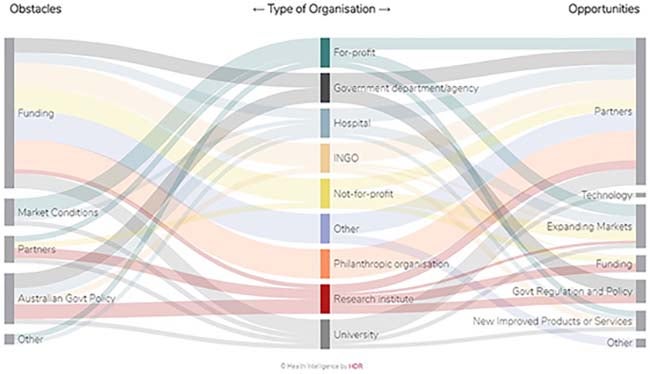Global Health Alliances: A Tool for Improved Outcomes
Our global health challenges are too big to be tackled alone. This is not a revolutionary statement; instead, it is a known fact among many government officials, non-profits/NGOs, philanthropists, universities, and anyone who has worked on global health issues for any period of time. It is also something that my colleagues and I are reminded of when we work alongside partners to develop lab design solutions around the world that not only meet operational requirements but are also staffed and utilized in a way that allows them to meet their full potential. We cannot do this work without a larger team of partners that is connected and working in lock-step with us.
This is part of the reason why HDR has long been a member of the Washington Global Health Alliance, based in Seattle, Washington in the United States and recently became a founding member of the Global Health Alliance Melbourne, based in Melbourne, Victoria in Australia. As the only architecture firm that is a member in either, we recognize that our involvement in these alliances is closely tied to our ability to make the most of every opportunity we have in front of us to impact global health challenges. Both of these alliances are built around the premise that when organizations come together to share information and resources related to key global health issues, our collective efforts are stronger and more impactful as a result. These alliances help organizations like ours see both the existing and the potential impact that they can make together.

An example of how we can work together was recently demonstrated when the Global Health Alliance Melbourne celebrated the launch of the Victoria International Health Sector - Capacity Report 2018. The Global Health Alliance Melbourne engaged HDR, as a member organization, to visualize some of the information documented in the report. The report outlines key findings and recommendations that confirm and reinforce the notion that Victoria is a hub of international health expertise in Australia. Collectively, hospitals, non-profits/NGO’s, government agencies, universities and the private sector are making an impact in areas such as health education and training, clinical trials for cancer and other noncommunicable diseases, research into neglected tropical diseases, and data informatics. In addition to the information included in the report, my HDR colleagues in Sydney were able to develop visualizations that essentially “map” the Global Health Alliance Melbourne membership. These visualizations clearly demonstrate member organization relationships, challenges and opportunities, and strategic priorities. These visualizations allow the valuable information that was collected for the report to live on in new ways, and spur new insights, that it might not otherwise.
Over the years, our membership with the Washington Global Health Alliance has provided us with invaluable information and connections and we look forward to similar outcomes from our involvement with the Global Health Alliance Melbourne. However, as organizations working on global health issues continue to develop capacity and stronger networks at the local and regional level, we must also continue to develop a larger global network where we can learn and apply lessons from others working on similar efforts in other countries, on other continents. HDR is a global organization with offices in North America, Australia, Europe, the Middle East and Asia. We are able to help make introductions and foster connections across a global network. This is an important aspect of our work in global health — one of the most essential imperatives to improving the human condition.




